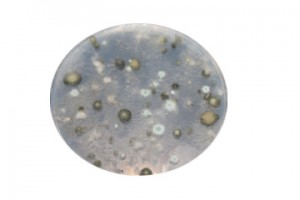After recognition of recent incidents of Legionnaires’ Disease in hospitals, more attention is being paid to Legionella spp by hotels and other travel industry members. In 1986, several European countries formed the European Working Group for Legionella Infections (EWGLI) to share knowledge about monitoring potential sources of Legionella as well as to provide technical guidelines …
We recently wrote about moldy documents in French archives and a higher incidence of asthma among workers who handled documents than others working in the same spaces but not handling them. See our previous post: “Hands off the moldy docs (for your own good?)” Now we find researchers reported that bacteria can also be transferred …
French archive employees handling moldy documents were found to be more likely to experience headaches, fatigue, eye or throat irritation, coughing, and rhinorrhea (stuffy nose) than their co-workers breathing the same air but not handling moldy documents . The culture and qPCR-based analysis of air samples showed Penicillium chrysogenum, Cladosporium sphaerospermum, and Aspergillus versicolor were …
Rob Dunn of North Carolina State University has written a charming and fascinating piece on the microbes that inhabit our belly buttons. You can find it here on the Scientific American blog site (http://blogs.scientificamerican.com/guest-blog/2012/11/07/after-two-years-scientists-still-cant-solve-belly-button-mystery-continue-navel-gazing/). I strongly recommend it for the skill of his writing as well as the extremely interesting insights into the microbes in …
The Virginia Tech group has published another paper looking at the impacts of indoor environmental conditions on microbes. In this case, it’s potentially a key clue to the on-going search for an explanation to the seasonality of influenza puzzle. It’s not just airborne humidity but also the droplet. composition that matter. Past efforts to find …
Going for a walk or drive in the country and viewing the fall colors when the leaves turn in the Boston area is a favorite pastime of residents of and visitors to the area. Leaf mold associated with autumn leaves in Massachusetts may have gotten into the indoor environment of the New England Compounding Center …
Destaillats et al 2011. “Secondary pollutants from ozone reactions with ventilation filters and degradation of filter media additives”, Atmospheric Environment, vol. 45, no. 21, p. 3561-3568, 2011. Can be freely downloaded from LBL.gov web site as LBNL-4829E.pdf (692.59 KB) http://iepubs.lbl.gov/publications/author/22
A paper has been uploaded to the Mendeley group associated with microbe.net, Microbiology of the Built Environment (http://www.mendeley.com/groups/844031/microbiology-of-the-built-environment/). Appropriately, the title of the paper is as accurate as it is concise: “Indoor air purification and decontamination by a new highly-efficient air purification technology with filter sterilization and impact of air exchange rate on bacteria and …
Lots of attention to disease transmission and illness related to air travel lately. A new paper in the journal Indoor Air suggests that if passengers would wear N-95 respirators when they fly, they could significantly reduce their risk of infection. You can read the paper “Risk assessment of airborne infectious diseases in aircraft cabins” at …
An article in the Sunday NYT on the Ecology of Disease — paints with a very broad brush that ignores the role of the microbiology of the built (and especially the indoor) environment, where we spend most of our time and most likely acquire most of our diseases. What the article ignores underscores the importance …
